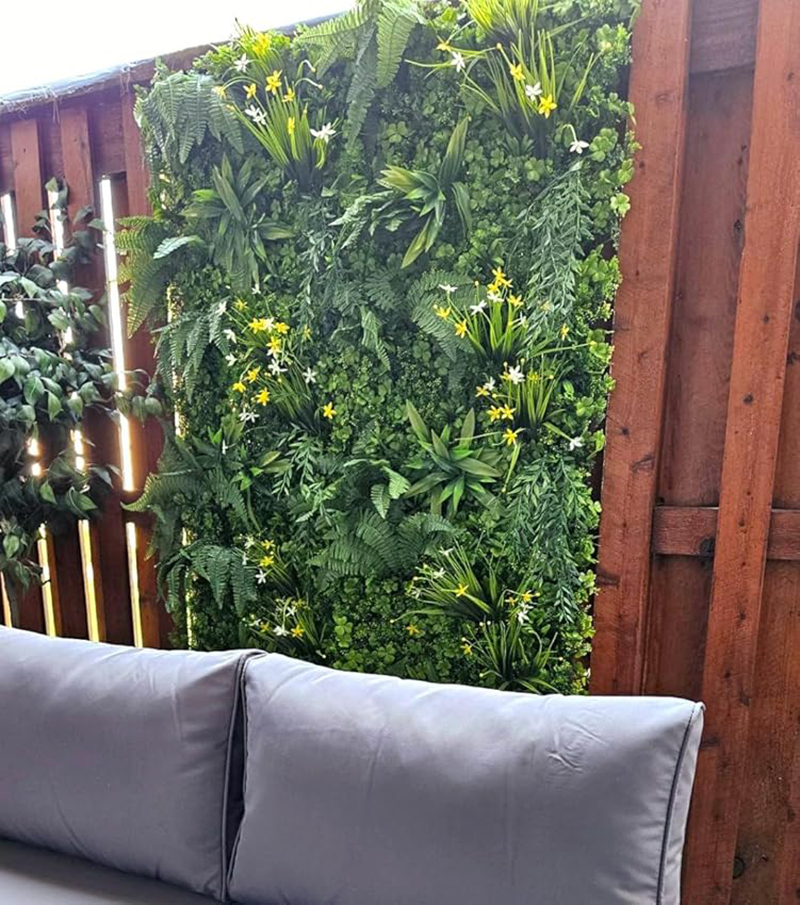Preserving Ecological Diversity in 3D Artificial Vertical Gardens
3D artificial vertical gardens offer a unique opportunity to integrate greenery into urban spaces while supporting ecological diversity. Unlike traditional flat gardens, their multi-layered structure creates microhabitats for various species. However, maintaining this diversity requires intentional design and management. Below are strategies to ensure these installations thrive as biodiverse ecosystems.

Designing for Microhabitat Variation
The three-dimensional nature of these gardens allows for distinct environmental niches within a single structure. Incorporate varying textures, depths, and orientations to mimic natural terrain. For example, mix shallow pockets for succulents with deeper compartments for trailing vines or ferns. This heterogeneity attracts a wider range of species, from pollinators like bees and butterflies to small birds or insects seeking shelter.
Include vertical elements such as trellises or hanging baskets to create layers. Upper sections can host sun-loving plants, while shaded lower areas support moisture-retentive species. Introduce decaying wood or stone piles in hidden corners to provide habitats for beetles, worms, and other decomposers. These microhabitats foster food chains, ensuring energy flows through the ecosystem.
Plant Selection to Support Local Biodiversity
Choose native species adapted to regional climate conditions, as they require less maintenance and support local wildlife. Native flowers like coneflowers or salvias attract native pollinators, while grasses or sedges offer nesting materials for birds. Avoid invasive plants that may outcompete indigenous species or disrupt soil health.
Diversify plant functional groups to enhance resilience. Combine nitrogen-fixing legumes with deep-rooted perennials and ground-covering herbs. This mix prevents erosion, improves soil fertility, and provides year-round resources. For example, early-blooming bulbs like crocuses offer nectar in spring, while late-flowering asters sustain pollinators into autumn.
Incorporate plants with varying lifespans. Annuals fill gaps quickly, while perennials form the backbone of the ecosystem. Shrubs or small trees, if space allows, add structural complexity and attract larger wildlife. Regularly update plant compositions to reflect seasonal changes and prevent monocultures from dominating.
Encouraging Pollinator and Invertebrate Populations
Pollinators are critical to ecological balance, yet urban environments often lack suitable habitats. Design vertical gardens with pollinator-friendly features, such as tubular flowers for hummingbirds or flat-topped blooms for beetles. Include host plants like milkweed for monarch butterflies or dill for swallowtail caterpillars to support larval stages.
Provide nesting sites by leaving bare soil patches, installing bee hotels, or incorporating hollow stems. Avoid pesticides, which harm non-target species and disrupt food webs. Instead, use natural deterrents like companion planting or physical barriers. For example, marigolds repel nematodes, while garlic deters aphids.
Attract beneficial invertebrates like ladybugs or lacewings, which prey on pests. Mulch with organic materials like straw or leaves to create humid microclimates for pill bugs and earthworms. These organisms aerate soil and break down organic matter, enriching the ecosystem.
Monitoring and Adapting to Ecological Changes
Regular observation is key to preserving diversity. Track plant health, pest populations, and wildlife activity to identify imbalances early. Use non-invasive methods like camera traps or pollinator counts to assess ecosystem function. Adjust management practices based on findings—for instance, adding more nectar-rich plants if pollinator visits decline.
Collaborate with local conservation groups to share data and insights. Participate in citizen science projects tracking urban biodiversity trends. This collective effort can highlight emerging threats, such as climate-induced shifts in species ranges.
Update garden designs periodically to reflect ecological knowledge. For example, if certain plants fail to attract target species, replace them with alternatives known to support local wildlife. Flexibility ensures the garden remains a dynamic, evolving habitat.
By prioritizing microhabitat creation, native plant diversity, and pollinator support, 3D artificial vertical gardens can become vibrant hubs of ecological activity. These strategies not only enhance urban aesthetics but also contribute to global biodiversity conservation efforts.
Contact: Amy
Phone: 86-15311787313
E-mail: info@foszmac.com
Whatsapp:86-15311787313
Add: Fengtai District, Dacheng Road, No.24 Building, Room 203, Beijing, China